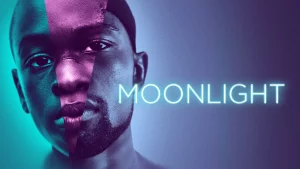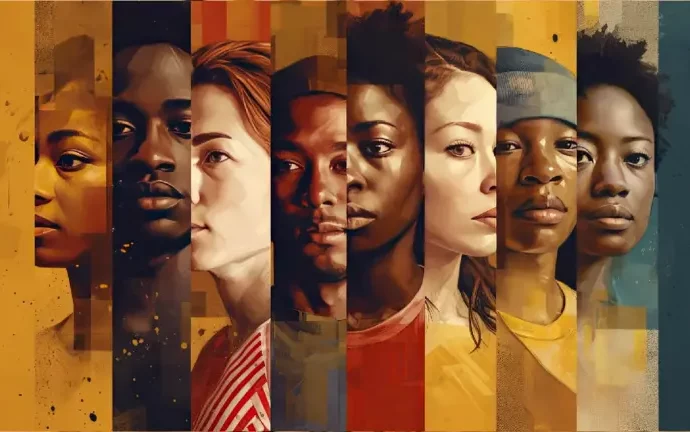Introduction The world of filmmaking is evolving rapidly, with diversity and representation taking center stage. As audiences become more inclusive and vocal, filmmakers and studios are adapting to reflect this growing demand for stories that resonate with a wider range of people. This shift is not only beneficial for underrepresented communities but is also transforming
Introduction
The world of filmmaking is evolving rapidly, with diversity and representation taking center stage. As audiences become more inclusive and vocal, filmmakers and studios are adapting to reflect this growing demand for stories that resonate with a wider range of people. This shift is not only beneficial for underrepresented communities but is also transforming the art and business of filmmaking itself.
The Importance of Diversity in Filmmaking

Image by: Yandex.com
Diversity in filmmaking refers to the inclusion of varied perspectives and backgrounds in the creation of films. This encompasses a range of factors, including race, gender, sexual orientation, age, and cultural heritage. The importance of diversity lies in its ability to enrich storytelling by presenting a wider array of experiences and viewpoints. When films reflect the diversity of the real world, they resonate more deeply with audiences, fostering empathy and understanding.
Representation Matters
Representation in filmmaking goes hand in hand with diversity. It ensures that people from different backgrounds see themselves reflected on screen in authentic and meaningful ways. Historically, many groups have been underrepresented or misrepresented in films, leading to stereotypes and a lack of visibility. By prioritizing representation, filmmakers can challenge these narratives, offering more accurate portrayals and empowering audiences.
The Push for Authentic Representation

Image by: Yandex.com
For many years, Hollywood was criticized for a lack of diversity on screen and behind the camera. Stereotypes, tokenism, and underrepresentation of minority groups were commonplace. However, in recent years, there has been a growing movement to change this narrative. Films like Black Panther, Crazy Rich Asians, and Moonlight have shown that diverse stories can not only succeed but also thrive at the box office.
Audiences today crave authenticity. People want to see characters who look, speak, and live like them. They want stories that reflect their own experiences and struggles. Authentic representation isn’t just about ticking boxes; it’s about telling stories that resonate on a deeper level.
The Role of Filmmakers and Studios

Image by: Yandex.com
Filmmakers have a critical role in shaping how diversity is portrayed on screen. Directors, producers, and writers from underrepresented backgrounds are bringing fresh perspectives to storytelling, allowing for a richer and more varied cinematic landscape. Studios, too, are recognizing the value of inclusive casting and storytelling.
Major studios like Disney, Warner Bros., and Netflix are increasingly making diversity a priority. They understand that diverse films appeal to a global audience, leading to greater cultural relevance and financial success. Independent filmmakers are also pushing boundaries, often addressing subjects mainstream media have ignored.
The Business of Diversity in Filmmaking

Image by: Yandex.com
Diversity isn’t just a moral or artistic choice; it’s a business decision. Films that reflect diverse experiences often outperform expectations. In fact, studies show that movies with diverse casts tend to have higher box office revenues. Why? Because they appeal to a broader, more global audience. Moreover, they tap into markets that were previously underrepresented, offering stories that connect deeply with viewers who may have felt overlooked.
This economic incentive has encouraged studios to take diversity seriously. Blockbusters like Encanto and Shang-Chi and the Legend of the Ten Rings illustrate how diverse stories can be both critical and commercial hits.
How Diversity Enhances Storytelling

Image by: Yandex.com
Diversity in filmmaking goes beyond casting actors from different ethnic backgrounds. It also means telling stories that cover a wide range of human experiences. By including diverse characters and perspectives, filmmakers can explore complex, nuanced narratives that add depth to the cinematic experience.
For example, films like Parasite and Get Out tackle issues of class and race, providing viewers with unique insights into societal struggles. Similarly, LGBTQ+ films such as Call Me by Your Name and Portrait of a Lady on Fire have expanded the boundaries of romance and personal identity in cinema.
This broadened perspective leads to a more enriching storytelling experience for audiences, allowing for the exploration of different cultural, social, and political themes.
Challenges Still Ahead

Image by: Yandex.com
While diversity in filmmaking has made significant strides, there are still challenges to overcome. One of the main obstacles is the underrepresentation of women and people of color in key creative roles, such as directors and screenwriters. Despite progress, the industry remains predominantly male and white in leadership positions.
Furthermore, achieving genuine representation requires more than just casting a diverse set of actors. Stories must be told with nuance and care to avoid reinforcing harmful stereotypes. It’s also crucial to ensure that underrepresented groups have the opportunity to tell their own stories from their own perspectives.
A Global Perspective on Diversity in Film

Image by: Yandex.com
The push for diversity isn’t limited to Hollywood. Around the world, filmmakers are using cinema to reflect their own cultural experiences. In countries like South Korea, Nigeria, and India, vibrant film industries are emerging, contributing to a global conversation about identity and representation.
Bollywood, for instance, has seen a shift toward more inclusive storytelling, with films addressing issues such as LGBTQ+ rights and gender equality. Meanwhile, the success of Nollywood, the Nigerian film industry, demonstrates the growing appetite for African stories told by African filmmakers.
Global streaming platforms like Netflix and Amazon Prime have made it easier for these international films to reach audiences worldwide, further driving the demand for diverse stories.
Analysis Table: Impact of Diversity on Filmmaking
| Area | Impact of Diversity | Explanation |
|---|---|---|
| Box Office Performance | Increased revenue | Diverse films attract a global audience, leading to higher profits. |
| Cultural Relevance | Broader societal impact | Films that reflect various cultures resonate more deeply with viewers, expanding the audience base. |
| Storytelling Depth | Richer, more complex narratives | Diversity introduces fresh perspectives, allowing filmmakers to explore new themes and experiences. |
| Industry Innovation | Emergence of new filmmakers and stories | Underrepresented filmmakers bring unique voices, pushing the boundaries of traditional storytelling. |
| Audience Connection | Stronger emotional engagement | Viewers are more likely to connect with films that reflect their own identities and experiences. |
| Global Reach | Growth in international film markets | Diverse storytelling appeals to international audiences, contributing to the globalization of the film industry. |
Comparative Table: Traditional vs. Diverse Filmmaking
| Aspect | Traditional Filmmaking | Diverse Filmmaking |
|---|---|---|
| Casting | Predominantly white and male leads | Inclusive of various ethnicities, genders, and sexual orientations |
| Themes | Focused on mainstream, Western-centric narratives | Explores a wide range of cultural, social, and political issues |
| Audience Appeal | Primarily targets Western audiences | Appeals to global, multicultural audiences |
| Economic Performance | Consistent but limited to familiar markets | Often higher revenue due to broader global appeal |
| Industry Impact | Maintains status quo in storytelling | Paves the way for new voices and innovative storytelling |
| Global Influence | Limited to a few major film industries | Influences global film markets and emerging industries like Nollywood |
Conclusion: A Future of Inclusive Cinema
Diversity and representation are not just buzzwords in filmmaking; they are essential to the future of cinema. As audiences become more diverse, they demand stories that reflect their own experiences and worldviews. Filmmakers and studios that embrace this transformation will not only contribute to a more inclusive world but also reap the financial and creative rewards that come with it.
The journey towards full representation in film is far from over, but the progress made so far is encouraging. With the continued push for inclusivity both on and off-screen, the future of filmmaking promises to be more vibrant, meaningful, and culturally connected than ever before.
















